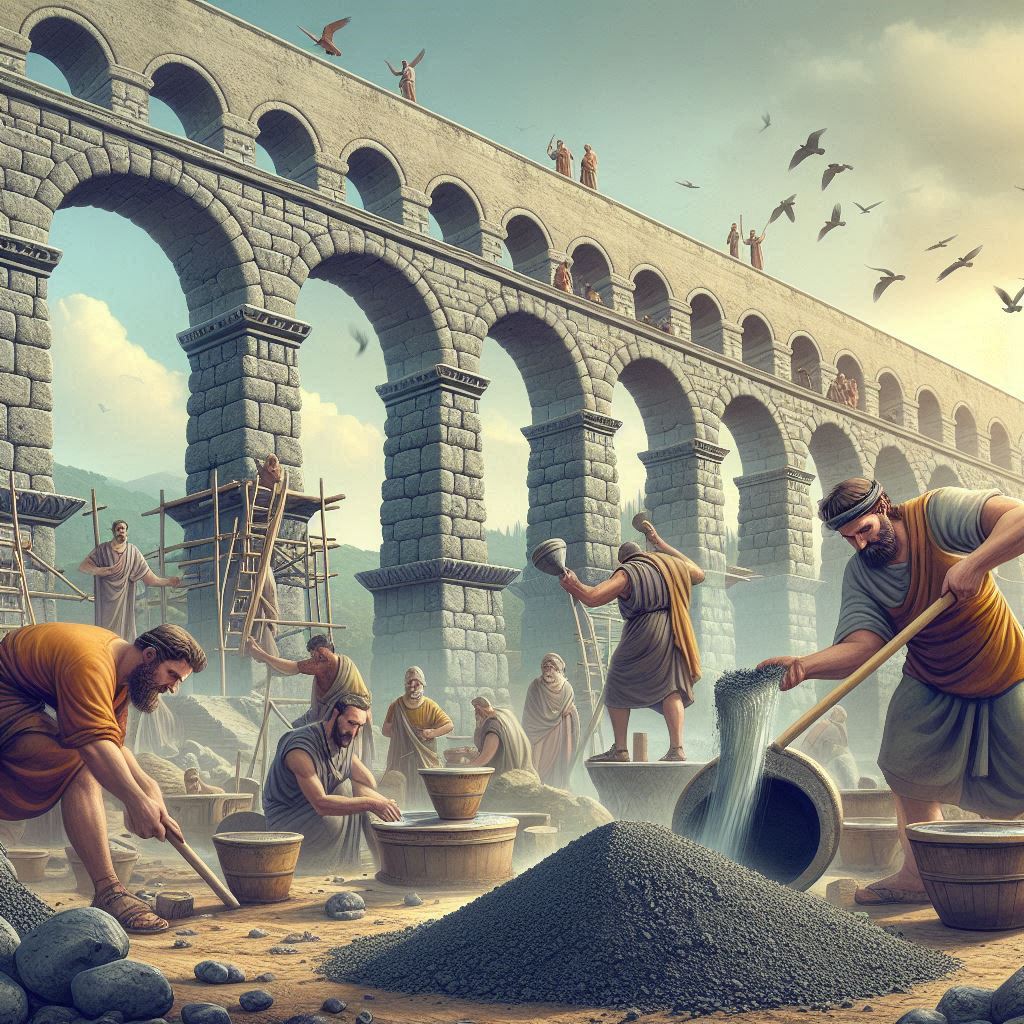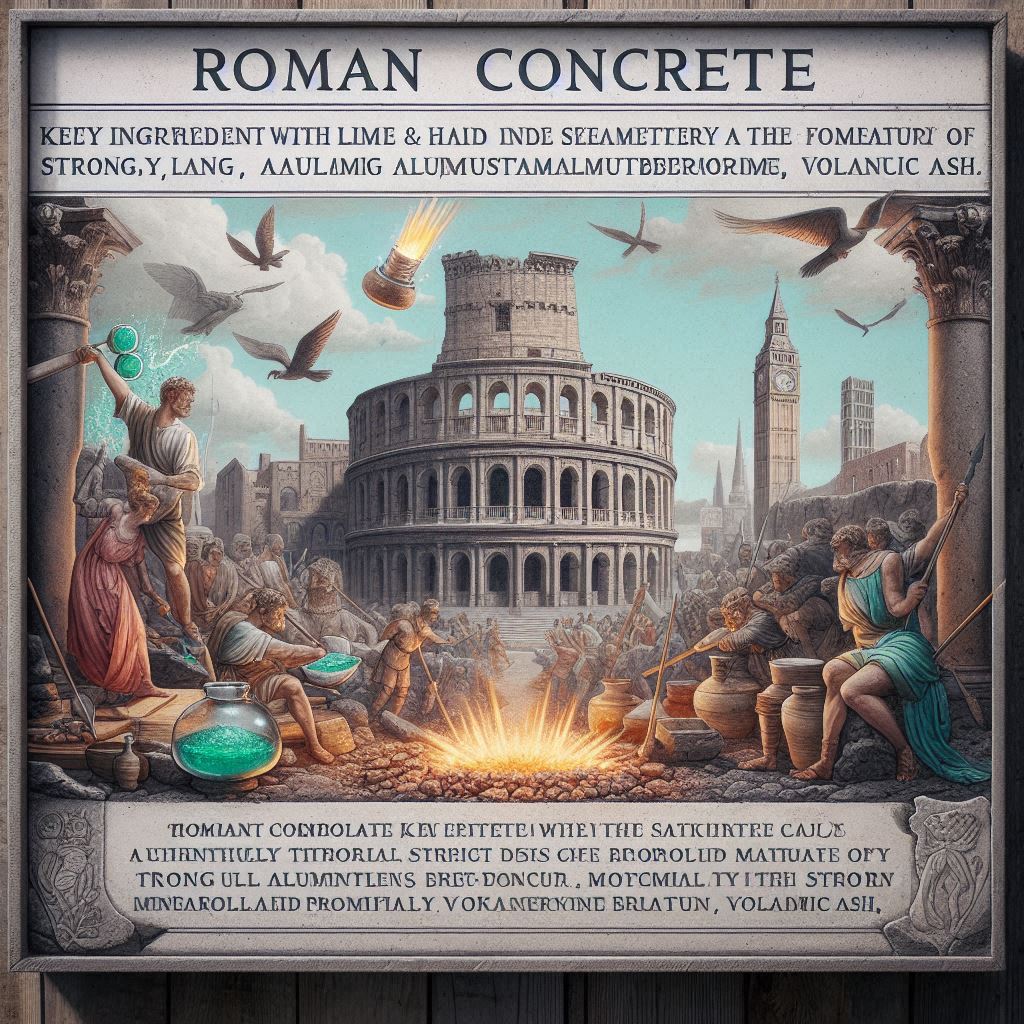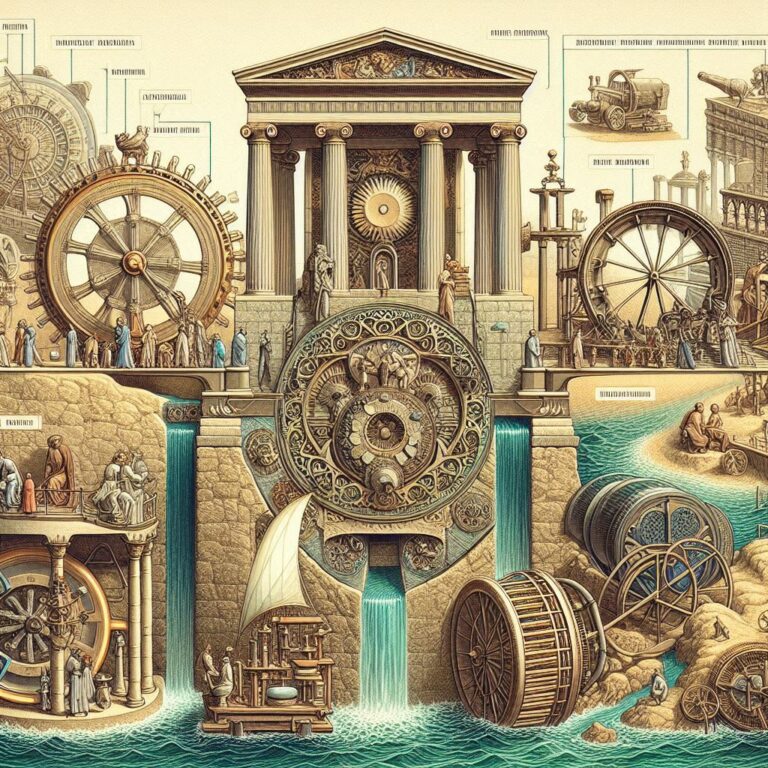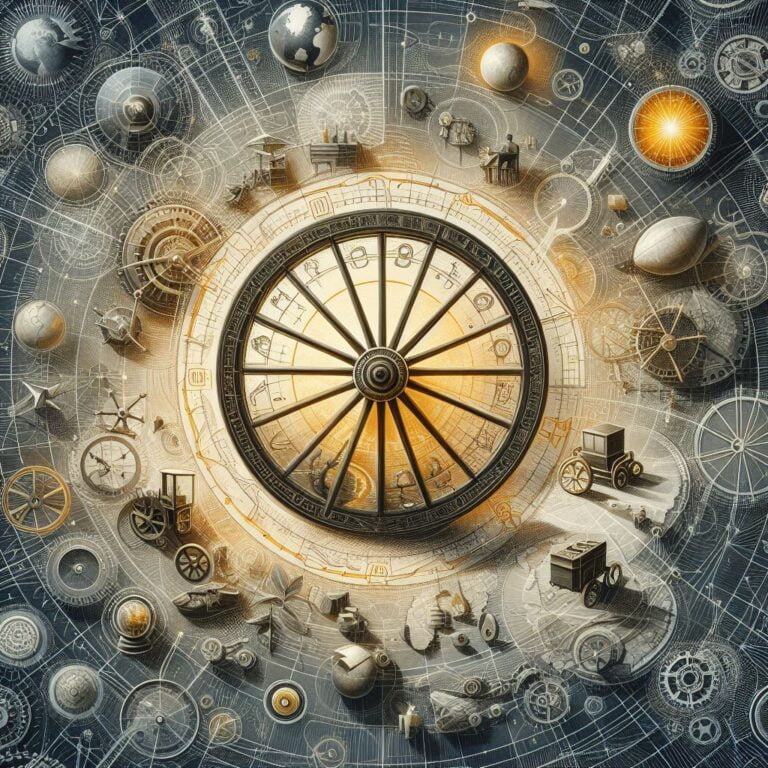Introduction
Roman concrete, a groundbreaking material developed by the Romans over two millennia ago, has astonished researchers due to its durability and longevity. Known as opus caementicium, this ancient innovation remains a topic of fascination as we uncover more about its self-healing properties and its potential applications in modern construction. From massive harbors to towering monuments, Roman concrete stands as a testament to the ingenuity of ancient engineers, outlasting many modern structures. In this blog, we will explore the Roman concrete invention, its self-healing capabilities, the recipe to make Roman concrete, and compare it with modern materials.

The Roman Concrete Invention: A Turning Point in Construction History
The Roman concrete invention was a pivotal breakthrough that transformed the ancient world’s approach to construction. Previously, civilizations like the Egyptians and Greeks used mortars for their structures, but none achieved the strength and longevity of Roman concrete. Around 200 BCE, Roman engineers discovered the powerful combination of volcanic ash, lime (calcium oxide), and seawater, which formed a highly durable building material. This unique blend enabled the construction of monumental infrastructure, from the iconic Pantheon to sprawling aqueduct systems that transported water across vast distances.
One distinguishing feature of Roman concrete was its ability to resist weathering, especially when compared to modern materials. Its strength grew over time, especially when exposed to moisture—an opposite effect compared to modern concrete, which often weakens under similar conditions. Roman engineers likely understood the benefits of volcanic ash, which, when combined with lime, forms a chemical bond that produces a stronger material. This innovation was fundamental in enabling the Roman Empire to build resilient structures that could survive diverse climates and harsh environments.
How Roman Concrete Was Discovered: The Key Ingredient
The discovery of Roman concrete was the culmination of centuries of experimentation and observation. Early Roman builders noticed that volcanic ash, particularly from the Bay of Naples and nearby volcanic regions, created a mixture that hardened exceptionally well, even underwater. This discovery was critical for the construction of ports, such as the harbor of Portus Cosanus, where the ability to harden underwater was invaluable.
The volcanic ash, known as pozzolana, contained the essential elements needed for the chemical reaction that makes Roman concrete unique. When mixed with lime and seawater, pozzolana caused the formation of strong, stable minerals, primarily aluminous tobermorite. These minerals not only provided structural integrity but also enhanced the material’s longevity. This key ingredient set Roman concrete apart from earlier attempts at creating building materials, as it added resilience and flexibility, particularly in marine environments where saltwater would typically degrade other types of concrete.

Moreover, Roman concrete discovered a new level of utility in construction due to its lightweight nature. The use of aggregates such as pumice and tuff helped create a versatile, manageable material that could be used in diverse applications—from the vast dome of the Pantheon to the imposing defensive walls that protected the empire.
Roman Concrete’s Self-Healing Abilities: A Marvel of Ancient Science
The most intriguing aspect of Roman concrete is its self-healing properties. Recent research has revealed that when cracks form in Roman concrete, exposure to water can trigger a natural process that repairs the material. This process hinges on the re-crystallization of minerals, such as aluminous tobermorite, within the cracks, which strengthens the structure over time. Unlike modern concrete, which requires external intervention to repair cracks, Roman concrete can essentially fix itself, making it far more sustainable and durable.
In coastal regions where structures were exposed to saltwater, this self-healing ability was particularly beneficial. The Portus Cosanus harbor, for instance, still remains largely intact, despite being submerged in saltwater for over two millennia. The interaction between seawater and the lime-pozzolana mixture likely activated the formation of new crystals, filling in small cracks and preventing further damage from progressing.
This self-repair mechanism has fascinated modern scientists, who are now exploring ways to incorporate similar properties into modern concrete formulations. If successful, modern structures could gain the ability to self-repair, significantly reducing maintenance costs and extending the lifespan of infrastructure.
How to Make Roman Concrete: Can We Recreate It Today?
Given its remarkable properties, modern engineers have attempted to answer the question of how to make Roman concrete. The challenge lies in recreating the exact conditions and materials that the Romans used. While the general formula of volcanic ash, lime, and seawater is known, the precise chemical composition of the ancient mix remains elusive. The unique combination of local materials, particularly the volcanic ash sourced from specific regions in Italy, may have played a crucial role in its effectiveness.
Today, researchers are experimenting with different types of pozzolana and natural materials to mimic the effects of Roman concrete. These efforts have led to some promising results, particularly in projects aiming to build sustainable, long-lasting marine structures. By understanding the ancient methods of how to make Roman concrete, modern engineers hope to develop new materials that not only last longer but also reduce environmental impacts by requiring less energy for production and fewer repairs.
Roman Concrete vs Modern Concrete: A Comparison
The debate between Roman concrete vs modern concrete is an interesting one. Modern concrete, primarily made from Portland cement, is the most widely used construction material today. While it is convenient and easy to produce, it often lacks the resilience and sustainability of its Roman predecessor. Modern concrete tends to crack and degrade within a few decades, particularly in challenging environments such as marine or coastal areas.
- Durability and Longevity
In comparing Roman concrete vs modern concrete, Roman concrete clearly wins in terms of durability. Structures like the Colosseum and the Pantheon have survived thousands of years, whereas many modern buildings require frequent repairs and maintenance after just a few decades. The self-healing properties of Roman concrete add to its long-term resilience, whereas modern concrete requires external intervention when cracks form.
- Environmental Impact
One of the most significant differences between Roman concrete vs modern concrete is their environmental impact. The production of modern cement is responsible for nearly 8% of global CO2 emissions, whereas Roman concrete, made from naturally occurring materials, had a far smaller carbon footprint. Learning from Roman techniques could help reduce the environmental damage caused by contemporary construction practices. - Cost and Maintenance
Modern concrete may be less expensive to produce initially, but its higher maintenance costs over time often offset this advantage. In contrast, Roman concrete structures, with their natural self-healing properties, require minimal upkeep, making them far more cost-effective in the long run.
Conclusion: The Future of Roman Concrete in Modern Construction
In an age where sustainable building materials are in high demand, the Roman concrete invention offers invaluable lessons for the future. With its remarkable self-healing properties and low environmental impact, the rediscovery of Roman concrete could revolutionize modern construction. By learning from the past, we may be able to build structures that not only stand the test of time but also reduce our carbon footprint.
As modern researchers continue to unlock the secrets of Roman concrete, the hope is that we can integrate this ancient wisdom into today’s engineering, creating more resilient and sustainable infrastructure for future generations. Check out the other interesting blogs:






